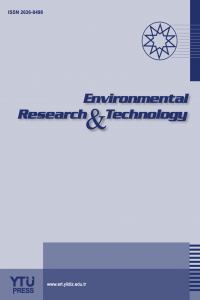Appraising the current state of irrigation schemes in Northern Nigeria using sustainability pillars
Appraising the current state of irrigation schemes in Northern Nigeria using sustainability pillars
___
- Shanono, N.J. Department of Agricultural and Environmental Engineering, Bayero University, Kano, Nigeria
- Yayın Aralığı: Yılda 4 Sayı
- Başlangıç: 2018
- Yayıncı: Yıldız Teknik Üniversitesi
Appraising the current state of irrigation schemes in Northern Nigeria using sustainability pillars
Nura Jafar SHANONO, Nuraddeen Mukhtar NASİDİ, Nura YAHAYA USMAN
Construction and demolition waste in Tungurahua: A case study from Ecuador
Juan Daniel CABRERA, Paola VELASCO
Operation cost analysis of UV-based ballast water treatment system used on a bulk carrier ship
Zeynep BALTA, Esra BİLGİN ŞİMŞEK
A process “algorithm” for C&D materials reuse through file-to-factory processes
Marina RİGİLLO, Sergio Russo ERMOLLİ, Giuliano GALLUCCİO, Sara PİCCİRİLLO, Sergio TORDO, Flavio GALDİ, Michela MUSTO
Chellaiah EDWARD RAJA, Ravi PANDEESWARİ, U RAMESH
Fikret Merih KILIÇ, Hediye YORULMAZ, Sümeyye ÖZUZUN, Uğur DURAK, Serhan İLKENTAPAR, Okan KARAHAN, Cengiz ATİŞ
Characterization and dye adsorption effectiveness of activated carbon synthesized from olive pomace
